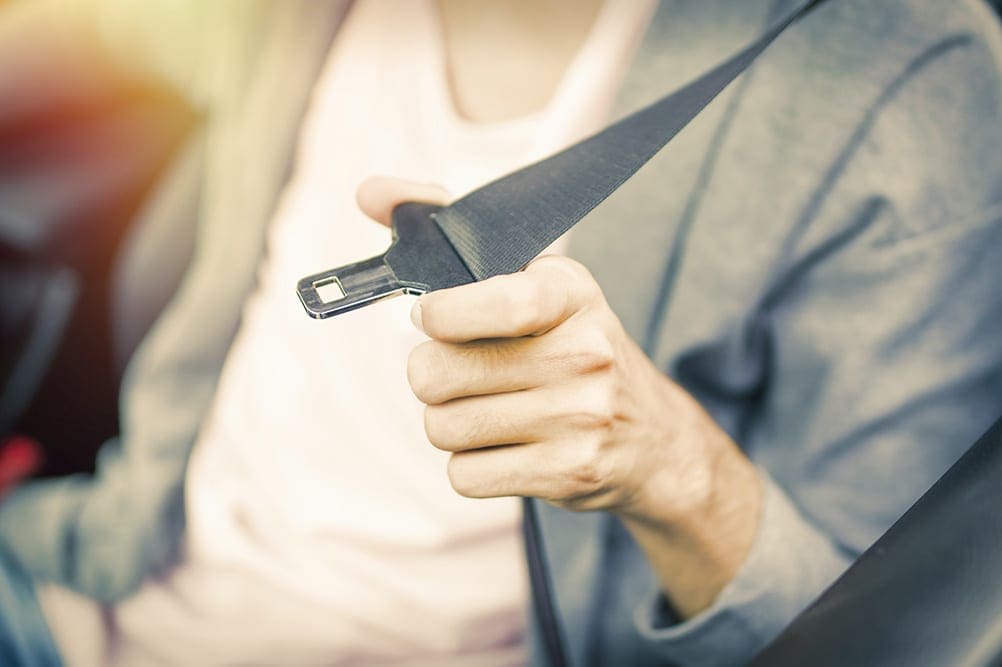In 2016, more than 32 million people failed to buckle up while in their vehicles – that’s nearly 10 percent of drivers and passengers. Decades ago, we learned about the life-saving importance of the seat belt, and since that time, states across the nation have required people to buckle up when operating a vehicle. And for good reason: Just between 2012 to 2016, seat belts saved nearly 67,000 lives. But there’s still so much work to do. Tragically, if all passenger vehicle occupants 5 and older involved in fatal crashes had worn their seat belts, an additional 2,456 lives could have been saved in 2016 alone.
Drivers across the country are asked to please make buckling up an automatic habit, just like brushing your teeth or turning off the light switch. Whether you ride in the front seat of the back, and no matter
which car sear or booster seat your child may use, everyone’s seat belt should be buckled every trip. According to NHTSA’s 2016 research, 10,428 people were killed by neglecting this one simple task. The action is so quick and so basic – and it can save your life.
Other facts about the dangers of unbuckled driving:
- Youth: Young adults in particular seem to think they are invincible in vehicles. Unfortunately, they are dying at a disproportionate rate because they are not wearing their seat belts.
- Males: Almost twice as many men are dying in vehicle crashed compared to women, and they are wearing their seat belts less often.
- Pickup Truck Drivers and Passengers: Many pickup truck occupants think that they don’t need to wear their seat belts because they believe their large vehicles will protect them in a crash. However, the numbers from NHTSA tell the truth: 60% of pickup truck occupants who were killed in crashed were not buckled up. That’s compared to 42% of passenger car occupants who were unbuckled when they were killed in crashes.
- Nighttime also poses a particularly dangerous threat to vehicle occupants. In 2015, about 57% of passenger vehicle occupants who were killed during the nighttime hours of 6 pm to 5:59 am were not wearing their seat belts. More people are being killed in nighttime crashes than ever before.
Each year, too many people die as a result of refusing to buckle their seat belts. The numbers must change. The behavior is too simple. Just a click of the seat belt. Do not just buckle up to avoid a ticket — our friends’ and families’ lives are more important than that. But if you are caught driving while unbuckled, you will get a ticket — no excuses, no warnings. Wearing your seat belt is required by law. Day and night, front seat and back, Click It or Ticket.
Bust the Myths
- Vehicle Type: There seems to be a misconception among those who drive and ride in pickup trucks that their large vehicles will protect them better than other vehicles would in a crash. The numbers say otherwise: 61% of pickup truck occupants who were killed in 2016 were not buckled up. That’s compared to 42% of passenger car occupants who were not wearing seat belts when they were killed. Regardless of vehicle type, seat belt use is the single most effective way to stay alive in a crash.
- Seating Position: Too many people wrongly believe they are safe in the back seat unrestrained. 47% of all front-seat passenger vehicle occupants killed in crashed in 2016 were unrestrained, but 57% of those killed in back seats were unrestrained.
- Rural vs. Urban Locations: People who live in rural areas might believe that their crash exposure is lower, but in 2016, there were 13,732 passenger vehicle fatalities in rural locations, compared to 9,366 fatalities in urban locations. Out of those fatalities, 49% of those killed in the rural locations were not wearing their seat belts, compared to 46% in urban locations.
Face the Facts
- The national seat belt use rate 2016 was 90.1%, which is good — but we can do better. The other 9.9% still needs to be reminded that seat belts save lives.
- Among young adults 18 to 34 killed in crashes in 2016, more than half (57%) were completely unrestrained — one of the highest percentages for all age groups.
- Men make up the majority of those killed in motor vehicle traffic crashes. In 2016, 65% of the 23,714 passenger vehicle occupants who were killed were men. It comes as no surprise that men wear their seat belts at a lower rate than woman do — 52% of men in fatal crashes were unrestrained, compared to 40% of woman.
- High-visibility sear belt enforcement is important 24 hours a day, but nighttime is especially deadly for unbuckled occupants. In 2016, 56% of passenger vehicle occupants killed at night (6 pm – 5:%9 am) were not wearing their seat belts.
Originally Posted on the Idealease Safety Bulletin

